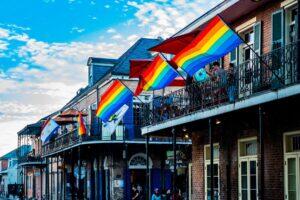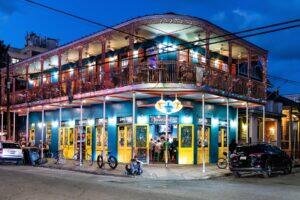Fodor's Expert Review Tulane University
Next to Loyola on St. Charles Avenue, Tulane University's three original buildings face the avenue: Tilton Hall (1902) on the right, Gibson Hall (1894) in the middle, and Dinwiddie Hall (1923) on the left. The Romanesque style, with its massive stone composition and arches, is repeated in several buildings around the quad. More modern campus buildings extend another three blocks to the north, including Newcomb Art Museum, a 3,600-square-foot exhibition facility offering contemporary and historical exhibits (free; closed Sunday and Monday). Tulane offers undergraduate, graduate, and professional degrees in liberal arts, science and engineering, architecture, business, law, social work, medicine, public health, and tropical medicine.
The Middle American Research Institute and Gallery(504/865–5110; mari.tulane.edu), located on the third floor of Tulane's Dinwiddie Hall, includes the world's largest documented Guatemalan textile collection and replicas of classic... READ MORE
Next to Loyola on St. Charles Avenue, Tulane University's three original buildings face the avenue: Tilton Hall (1902) on the right, Gibson Hall (1894) in the middle, and Dinwiddie Hall (1923) on the left. The Romanesque style, with its massive stone composition and arches, is repeated in several buildings around the quad. More modern campus buildings extend another three blocks to the north, including Newcomb Art Museum, a 3,600-square-foot exhibition facility offering contemporary and historical exhibits (free; closed Sunday and Monday). Tulane offers undergraduate, graduate, and professional degrees in liberal arts, science and engineering, architecture, business, law, social work, medicine, public health, and tropical medicine.
The Middle American Research Institute and Gallery(504/865–5110; mari.tulane.edu), located on the third floor of Tulane's Dinwiddie Hall, includes the world's largest documented Guatemalan textile collection and replicas of classic Mayan sculpture. Established in 1924, the institute's collection also includes rare artifacts like poison-dart arrows from Venezuela and shrunken heads from the Brazilian rain forest. On view at the gallery is "Faces of the Maya." The pre-Columbian artifacts are complemented by a collection of books on Latin American culture housed in Tulane's main library (free; closed weekends, appointment recommended).
READ LESS








